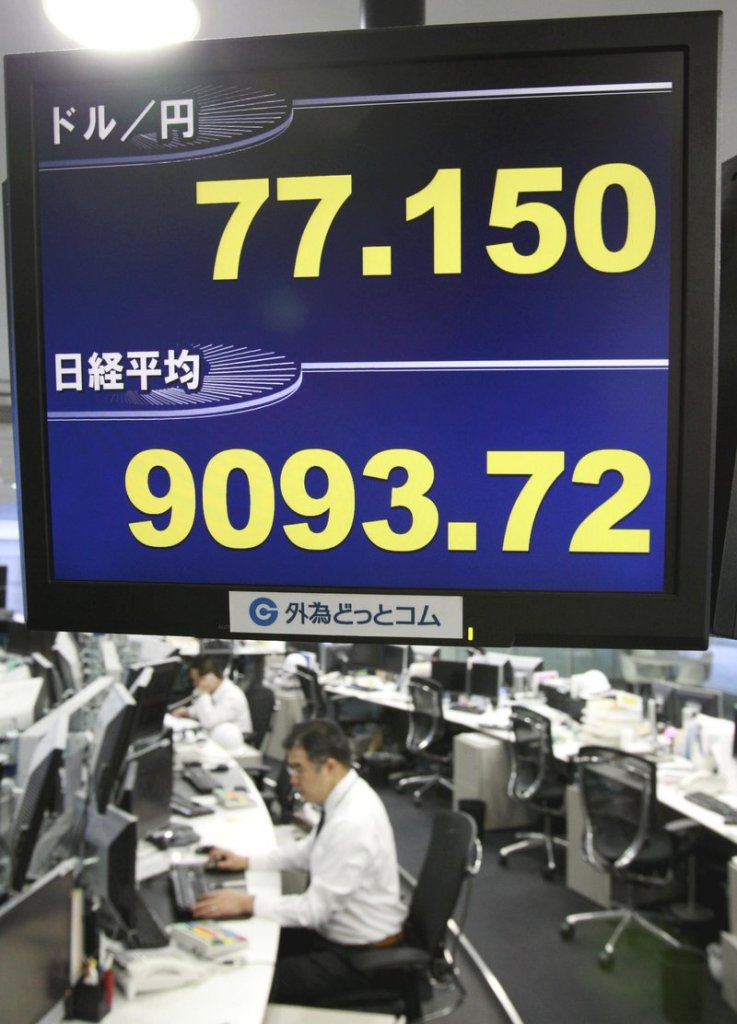WASHINGTON – The crisis in Japan has pushed the U.S. dollar to its lowest levels since World War II, a trend that could give American exporters an advantage and help strengthen the U.S. economy.
Investors are selling off their dollars and buying yen on the expectation of a major rebuilding effort in Japan. A weaker dollar makes U.S. exports cheaper overseas. But it also could fuel inflation at a time when prices for food and oil are already creeping up.
The dollar had fallen Wednesday to the point where it took only 76.32 yen to buy $1 — the lowest level since the mid-1940s. It rose to trade at 78.97 yen Thursday afternoon.
The dollar’s value against the yen has been sliding for months. But the trend accelerated after last week’s devastating earthquake, tsunami and resulting nuclear crisis.
Normally, a country facing such calamities would see its currency weaken in value as investors grew concerned about weaker economic growth, said Mark Zandi, chief economist at Moody’s Analytics.
“That is being overridden at the moment by the view that a lot of money will be brought back to Japan” for widespread reconstruction, Zandi said.
A weaker dollar against the yen means that Japanese autos and other goods would cost Americans more while U.S-made cars and other products would be more competitive in Japan.
But it could also lead to inflation because the price of Toyotas and Hondas would rise. And the price of oil could rise at a time when it has already been trading above $100 a barrel. Oil producers are paid in U.S. dollars, so a weaker dollar would prompt Saudi Arabia and other producers to raise the price.
Send questions/comments to the editors.



Success. Please wait for the page to reload. If the page does not reload within 5 seconds, please refresh the page.
Enter your email and password to access comments.
Hi, to comment on stories you must . This profile is in addition to your subscription and website login.
Already have a commenting profile? .
Invalid username/password.
Please check your email to confirm and complete your registration.
Only subscribers are eligible to post comments. Please subscribe or login first for digital access. Here’s why.
Use the form below to reset your password. When you've submitted your account email, we will send an email with a reset code.